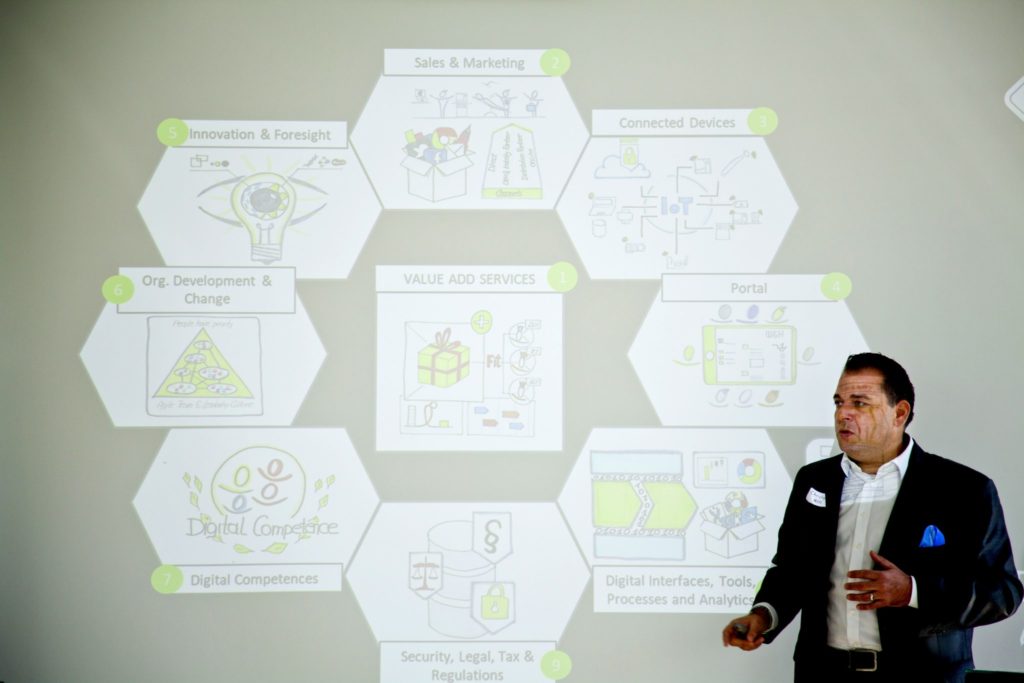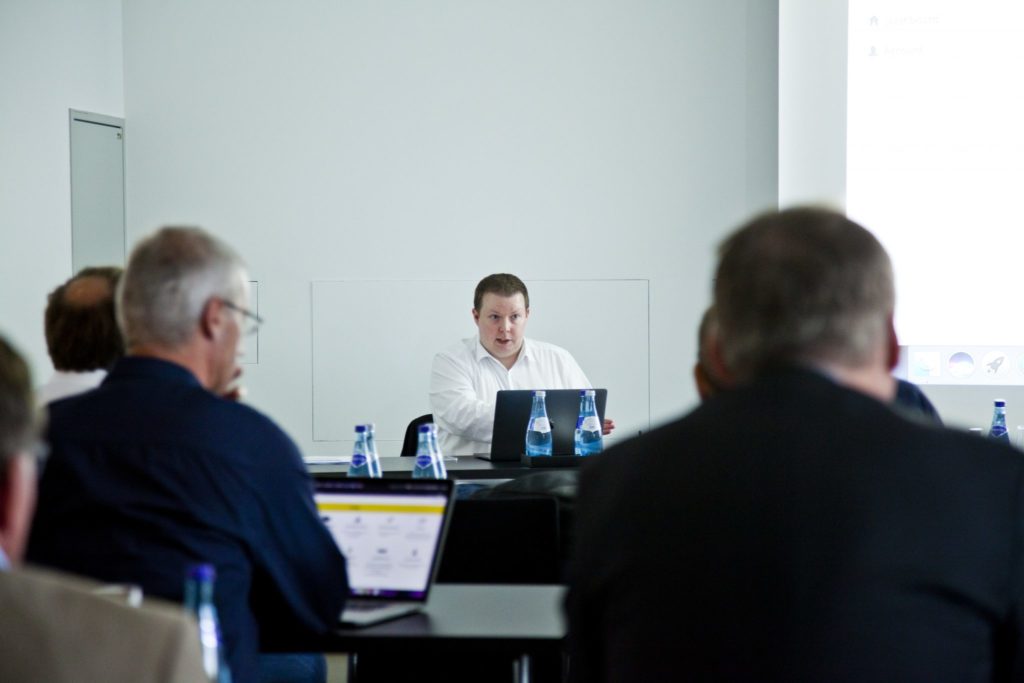The first IoT Circle on 6 November 2019 in Salzburg covered a broad spectrum from business models to technology and practical implementation. 50 participants gathered in the circle organized by Microtronics, PwC and u-blox. In addition to entertainment, informative lectures and a hands-on workshop, there was plenty of time for intensive discussions. In the hotel Cool Mama the participants were spoiled culinary with lunch as well as dinner with a view from the 15th floor far over Salzburg.

Mit dem Laden des Videos akzeptieren Sie die Datenschutzerklärung von YouTube.
Mehr erfahren

IoT in a regulated environment
In keeping with the IoT Circle, Christoph Hiltl, Director Digital Solutions at W&H Dentalwerk, provided deep insights with his lecture “IoT in a regulated environment or how to square the circle”. He showed the many challenges he has mastered on the way to successful IoT solutions.
From internal challenges such as breaking through traditions to agile working methods to the complex issue of approving products in a regulated market such as the medical sectors, he showed the area of conflict. It is often difficult to justify IoT projects at all. In addition to the actual pricing of the solution on the market, there are values that cannot simply be calculated in an Excel sheet. For example, how fast does the time-to-market actually have to be in order to remain competitive and how high are the cost-of-delay if the competitor is faster on the market with his solution?

“Once the data is in the cloud, anyone can do it! But how does the data get there?” Christoph Hiltl shows the significance of an integrated solution. There are many IoT platforms that do fascinating things with the data, but without trustworthy data that flow reliably into the platform they are worthless. It is important to find out which data is needed and how it can be collected.
Innovation is vital for survival
“Those who fail to implement real innovations will not survive,” said Andreas Hahn, Senior Manager at PwC. Buzzwords and marketing slogans are not enough, experience counts. The innovation theatre must come to an end. Implementation and speed are what count.

For this reason, the CEO must show colours in the innovation cycle and play an active role in shaping it. After all, the future of his company is at stake. The innovation team must be freed from operational activities in order to be able to concentrate on innovations and their implementation.
Technology deep-dive
Samuele Falcomer, Senior Product Manager at u-blox, introduced the different 5G categories and in which applications they are used. The security and root of trust were highlighted by Samuele Falcomer as challenges u-blox is tackling. It is important not only to secure communication and transmission but also to be able to trust the device itself. The complexity of exchanging certificates and keys, especially for large quantities, must be reliably mastered. Last but not least, this all happens with regard to the service life of the device. With battery lifetime of 5 years and more, the remaining components of the device must also be able to cope with this time.

Johannes Baur, Senior Field Application Engineer at u-blox, showed the opportunities that technologies will bring to IoT devices in the future. Faster pairing, significantly greater range, mesh capability and faster transmission, which in turn results in longer battery life, are major benefits.
“The more people are outside the control loop, the more precise navigation sensors are required,” Johannes Baur also addressed the trend toward ever more precise positioning. RTK and Multiband High Precision GNSS (HPG) make it economically interesting and possible to achieve centimetre-precise positioning with IoT devices.
Hands-on – Realisation & Workflow for Developers
Martin Buber, Business Development Manager at Microtronics, introduces the IoT App Store as well as the collaborative way developers work and share codes and apps. All interfaces are managed in the rapidM2M Studio and versioned over the entire life cycle. An IoT App is a compiled package that contains all necessary codes (meta data, shares, portal views, device logic, backend logic) and makes them available in the App Store. The App Store is the distribution policy when sharing IoT Apps. The rapidM2M Studio is a single point of service for the development of IoT applications.

At the final hands-on workshop with Josef Posch, Head of Documentation at Microtronics, the participants of the first IoT Circle were able to try out for themselves how this all looks like in practice. The participants created their first small IoT application with the rapidM2M Base Starter. Battery and charging voltage were recorded and transmitted to the server. The IoT App created in the rapidM2M Studio was distributed via the App Store. An experience of success for all participants.
Conclusion
The first IoT Circle was a great mixture of theory, practice and actual implementation examples. The open exchange and dialogue with others facing similar challenges is extremely valuable. It helps to assess whether you are on the right track and what others are doing. The participants were able to network with experts and get to know the IoT market better. The result is a network of experts that will last even after the first IoT Circle. One is for sure: Further IoT Circles will follow.

Subscribe to the Microtronics Newsletter to find out when and where the next IoT Circle will take place. You will also receive the most important news about business models, technologies and development on a monthly basis.


